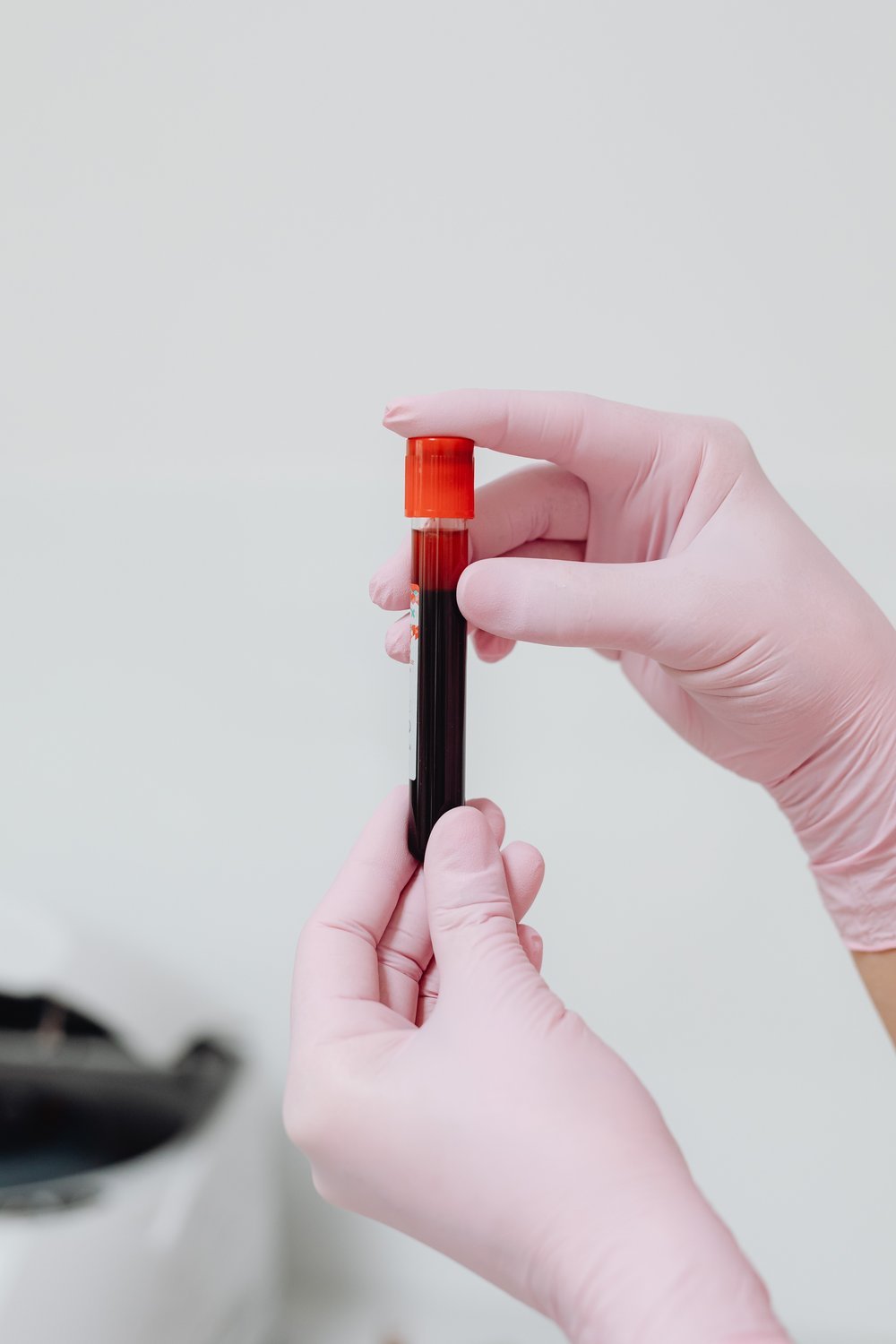Menstrual blood: The key to better diagnostics.
From waste to data
Today, information regarding health and well-being is generally provided through blood tests using serum from venous blood, measuring specific biomarkers. The blood is obtained through an invasive process using a needle and syringe.
With menstrual blood being seen as nothing more than a waste product, it was never considered something that could be used as an alternative to venous blood or something that could be used for anything at all... until now.
Now, theblood and others are looking into menstrual blood not just as an alternative to venous blood, offering menstruators a regular, non-invasive source of bodily fluid, but also as something that can provide more – more insights into women* and the diseases that affect only women.
*women here refers to those who menstruate and/or have female reproductive anatomy, in a general manner.
Because the sad reality is - we don’t know enough about such diseases, and we know very little about menstrual blood.
But this is what makes menstrual blood so bloody exciting! It is an untapped resource. Not only is there just so much to learn and discover about it, but it could also significantly contribute to understanding women’s health, and helping to close the gender health gap!
Menstrual blood has long been thought of as nothing more than a waste product by everyone, including menstruators themselves and scientific researchers. No one really talked about menstrual blood, let alone looked at it in more detail.
But now, theblood and many more innovative researchers and fem-tech companies are not only talking about menstruation and menstrual blood, but they’re also looking at menstrual blood and discovering the potential that this bodily fluid has for providing insights into women’s health, and as a potential tool for diagnostic purposes
What is menstrual blood?
Before we get into what menstrual blood can potentially be used for, it’s best we talk about what menstrual blood actually is.
Menstrual blood is the fluid that is expelled from a person’s vagina during menstruation, as part of the menstrual cycle. During the luteal phase, the uterine lining thickens, preparing for the possible implantation of a fertilised egg. However, when this does not occur, the shedding of the uterine lining takes place, which is ultimately removed from the body as menstrual effluent (menstrual blood).
What is in menstrual blood?
Menstrual blood is so much more than just blood! It also contains endometrial tissue with live cells, immune cells, proteins, and even some microorganisms from the vaginal microbiome!
In fact, menstrual blood is a unique biological fluid, with its own specific makeup of immune cells and 385 proteins that are not found in systemic blood (Yang et al. 2012; van der Molen et al. 2014). This is what makes menstrual blood so exciting! And what makes it even better, is that it can be obtained non-invasively and regularly, using a menstrual cup or other menstrual products during menstruation.
The potential of menstrual blood: a quick glance
The development of easy-to-use and non-invasive collection methods for menstrual blood for analysis can potentially revolutionise preventative and reproductive healthcare. Utilising menstrual blood could potentially offer a way to monitor certain health conditions through the measurement of specific biomarkers, and allow for the early diagnosis of currently hard-to-diagnose health conditions, such as endometriosis.
Current state of research on menstrual blood
Sara Naseri and Paul Blumenthal were the first to prove that menstrual blood could potentially be used as an alternative to systemic blood in their first proof-of-concept study in 2019, for a number of routine biomarkers. Since then, using a dried-blood approach, they have shown that menstrual blood can be used to detect HPV for preliminary cervical cancer screening, and can be used for measuring glycated haemoglobin (HbA1c) levels, as a non-invasive alternative to serum, for the potential clinical management of diabetes mellitus (DM).
Endometriosis researchers Christine Metz and her colleague Peter Gregersen at Feinstein Institutes for Medical Research began looking into menstrual blood to help shed some light on the pathogenesis of endometriosis, which could potentially help with diagnosis and treatment of the disease. Endometriosis is a condition that affects 10% of women, whereby tissue that normally lines the inside of the uterus forms as lesions in other areas, such as on the ovaries and fallopian tubes. It is a very painful condition, and can often go undiagnosed for up to 10 years, with diagnosis usually only following an invasive laparoscopic surgical procedure. Currently, the exact cause of endometriosis is not known, but as menstrual blood sometimes goes into the fallopian tubes and abdominal cavity before it is shed, it could hold some valuable clues. The preliminary results from a clinical study involving people diagnosed with endometriosis showed that there is a difference in the number and gene expression of immune cells within the menstrual effluent for those with the disease, compared to the healthy control individuals (Miller et al. 2022). Such studies not only provide valuable insights for endometriosis research, but also highlight how menstrual blood could potentially be used in the future to aid with diagnosing such diseases.
Above are just some examples of how menstrual blood is being currently explored for both research purposes, and for unveiling its possible clinical and therapeutic value (there are more - including its possible use as a source of stem cells for regenerative therapy!)
And, as you can see, menstrual blood is already proving to be so much more than just something to be thrown away! It’s far from disgusting, or shameful… it’s actually pretty amazing and seemingly useful!
So, what are theblood doing?
theblood are developing an at-home menstrual blood test where menstrual blood can be used to measure and monitor routine biomarkers, such as hormones and vitamins.
The mission: to empower menstruators and enable them to take a proactive stance on understanding their body, and ensuring their health and well-being.
Making menstrual blood testing a reality is not an easy feat, with clinical studies, and lab validation procedures needed to prove and ensure that menstrual blood can be used reliably, in a comparable manner to other accepted fluids like venous serum and capillary blood. Which is what theblood are currently working on, behind the scenes… in the meantime, theblood are starting the conversation on menstrual blood and working on changing the current narrative from one of negative stigma, to one of empowerment!
“The Future of Menstruation is Now”.
Be sure to sign up for the newsletter below to stay up-to-date with what theblood are up to, how you can get involved with our mission, and to join in on the conversation on all things menstrual-related.
References & further reading:





